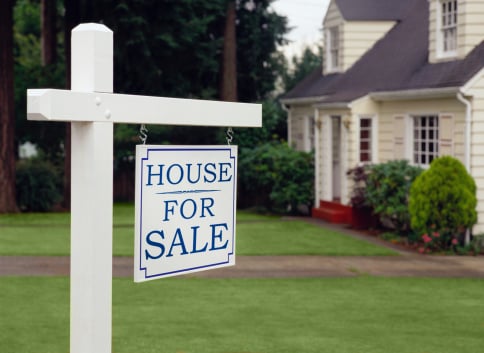In another sign that the financial situation of many Americans has improved, and perhaps that fewer mortgages are underwater, mortgage delinquencies fell to levels last seen in 2008, the period when the housing bubble crisis was reaching its worst. Source: Thinkstock
Source: Thinkstock
Credit reporting agency TransUnion reported that, based on data about mortgages on which borrowers are two months or more behind, according to the AP:
The mortgage delinquency rate fell to 3.85 percent in the October-December, down from 5.08 percent in the prior-year period and 4.09 percent in the third quarter.
And:
The late-payment rate on mortgages has improved because of several factors, including rising home prices and low interest rates that make it easier for homeowners to refinance and lower their payments.
The improved delinquency rate adds to a list of factors that should continue to help home prices rise and home sales to improve. The carefully followed S&P/Case-Shiller Home Price Indices report for November showed that “the 10-City and 20-City Composites increased 13.8% and 13.7% year-over-year.” The improvement spread across all 20 cities the research group follows. Some of the weakest markets during the housing crisis showed the best rebounds. The year-over-year price improvement in Las Vegas was 27.3%. In Detroit, the improvement was 17.3%.
Data from RealtyTrac pointed in the same direction of an improved housing market.
Year-End 2013 U.S. Foreclosure Market Report, which showed foreclosure filings — default notices, scheduled auctions and bank repossessions — were reported on 1,361,795 U.S. properties in 2013, down 26 percent from 2012 and down 53 percent from the peak of 2.9 million properties with foreclosure filings in 2010. The 1.4 million total properties with foreclosure filings in 2013 was the lowest annual total since 2007, when there were 1.3 million properties with foreclosure filings.
If foreclosures are driven to some extent by delinquent mortgages, the foreclosure rate should continue to improve. And, if the low prices on foreclosed homes drag down the prices of homes nearby, then there should be an accelerated rise in those prices as well. Research firm Corelogic confirmed this trend:
Our analysis shows that nearly 6.4 million homes, or 13 percent of all residential properties with a mortgage, were still in negative equity at the end of the third quarter. This compares to 7.2 million homes, or 14.7 percent of all residential properties with a mortgage, at the end of the second quarter of 2013.
The virtuous cycle of low foreclosures, improved home prices, low delinquencies and few underwater mortgages has started to take hold. That means the housing market likely will improve throughout 2014.
Sponsored: Attention Savvy Investors: Speak to 3 Financial Experts – FREE
Ever wanted an extra set of eyes on an investment you’re considering? Now you can speak with up to 3 financial experts in your area for FREE. By simply
clicking here you can begin to match with financial professionals who can help guide you through the financial decisions you’re making. And the best part? The first conversation with them is free.
Click here to match with up to 3 financial pros who would be excited to help you make financial decisions.
Thank you for reading! Have some feedback for us?
Contact the 24/7 Wall St. editorial team.



